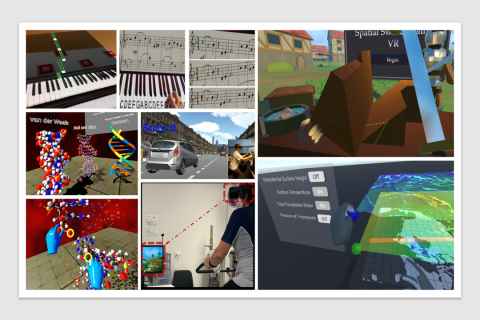EXTended REality Multi-modal Education and Training (EXTREME)
This project investigates the use of extended reality (XR) technologies and multi-modal learning for education.

This project investigates the use of extended reality (XR) technologies and multi-modal learning for education, including innovative teaching tools, evaluating the effectiveness of AR/VR technologies, collaborative teaching and learning in AR/VR, embodied learning, and developing platforms and frameworks for using extended reality in education.
The project combines knowledge from a wide variety of research fields including computer graphics, education, human computer interaction, computer vision, arts and design, and subject specific expertise.
Extended reality (XR) refers to all real-and-virtual combined environments and human-machine interactions generated by computer technology and wearables. In this project we investigate the entire mixed reality continuum, from virtual reality (VR) to augmented reality (AR), for developing more effective teaching and learning applications. Extended reality technologies have numerous advantages over conventional learning technologies such as being more immersive and engaging, and highly interactive.
With the potential for more natural interfaces, virtual content allows us to conduct actions/experiments which are not possible or dangerous in the real world, and to repeat them if necessary, and often no human instructor or physical lab is required. Using augmented reality furthermore enables augmentation of real-world objects with virtual information in order to improve understanding or provide feedback (e.g. incorrectly played notes on a piano). Multi-modal learning is achieved by combining visual, auditory, and potentially haptic feedback, as well as interacting with the learning content and using embodiment.
However, developing virtual content is currently expensive, and when used poorly it increases cognitive load and can be distracting. Poorly designed experienced can cause simulation sickness, and there are few tools for rapidly creating AR/VR education applications.
Contact
Dr Burkhard Wuensche
Senior Lecturer
School of Computer Science
University of Auckland
burkhard@cs.auckland.ac.nz